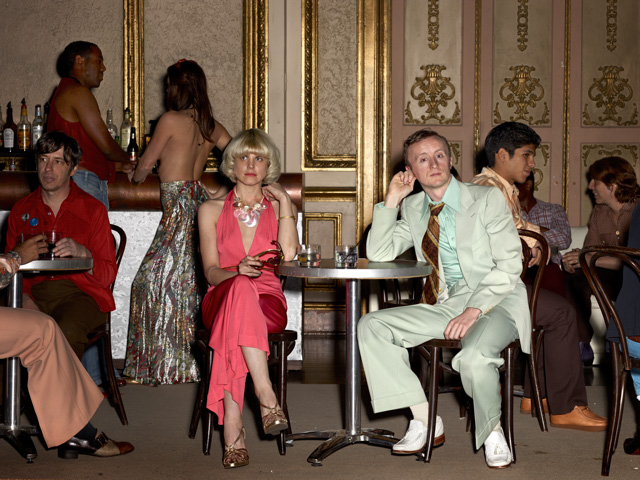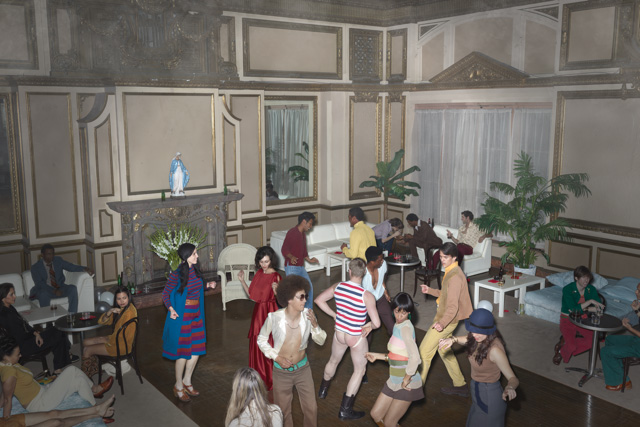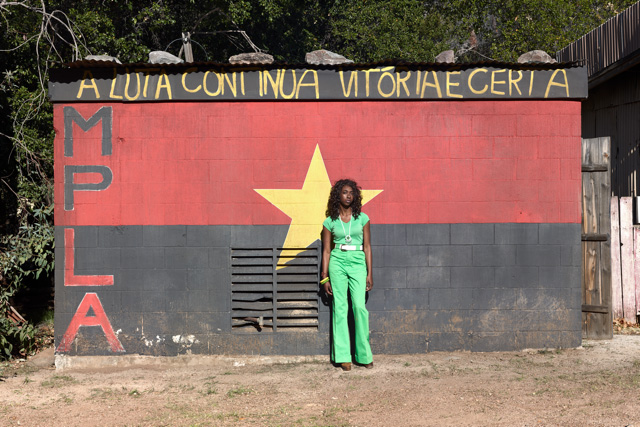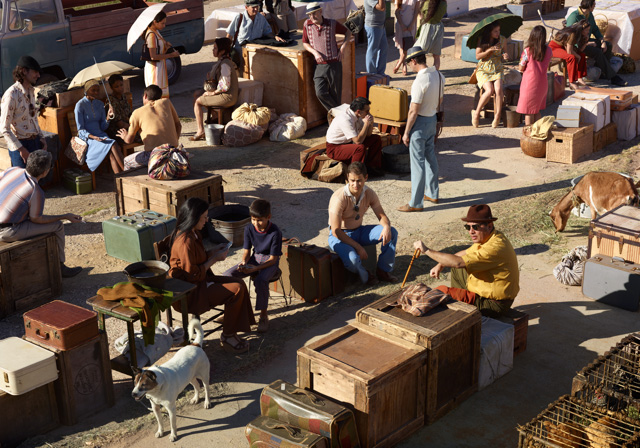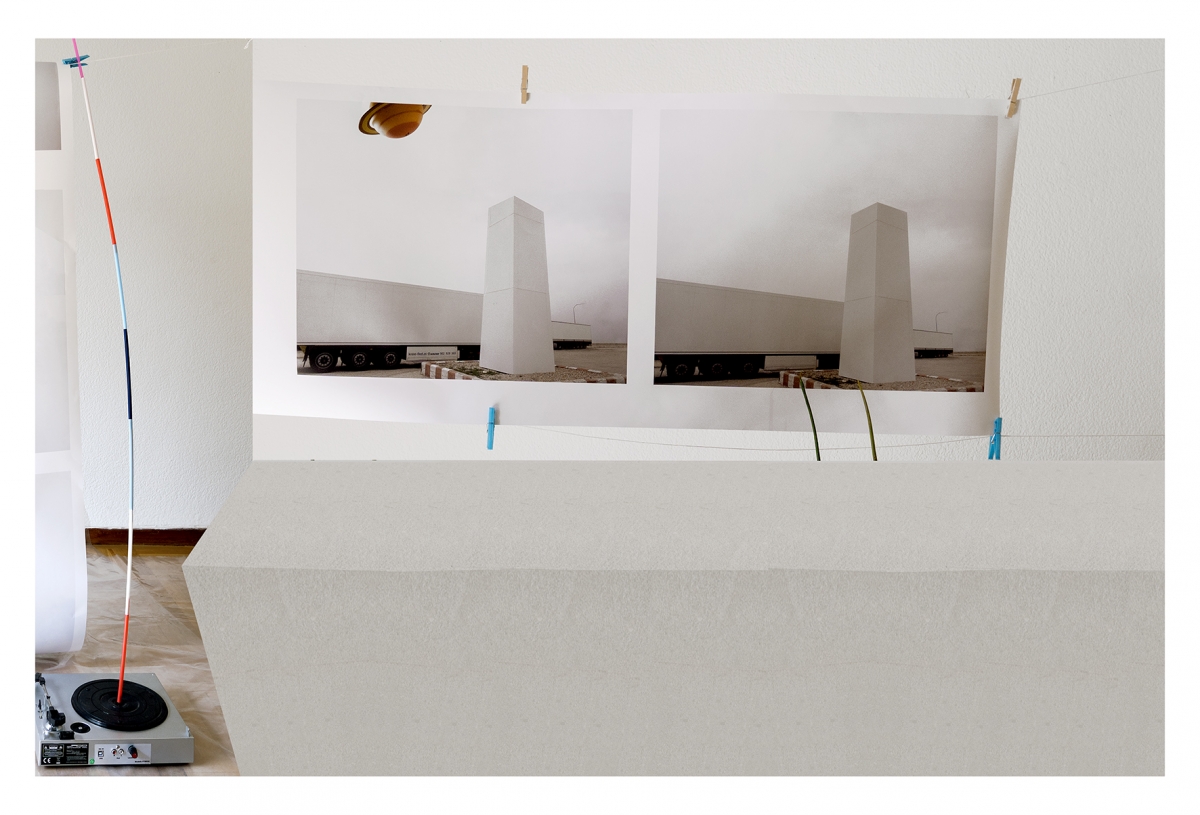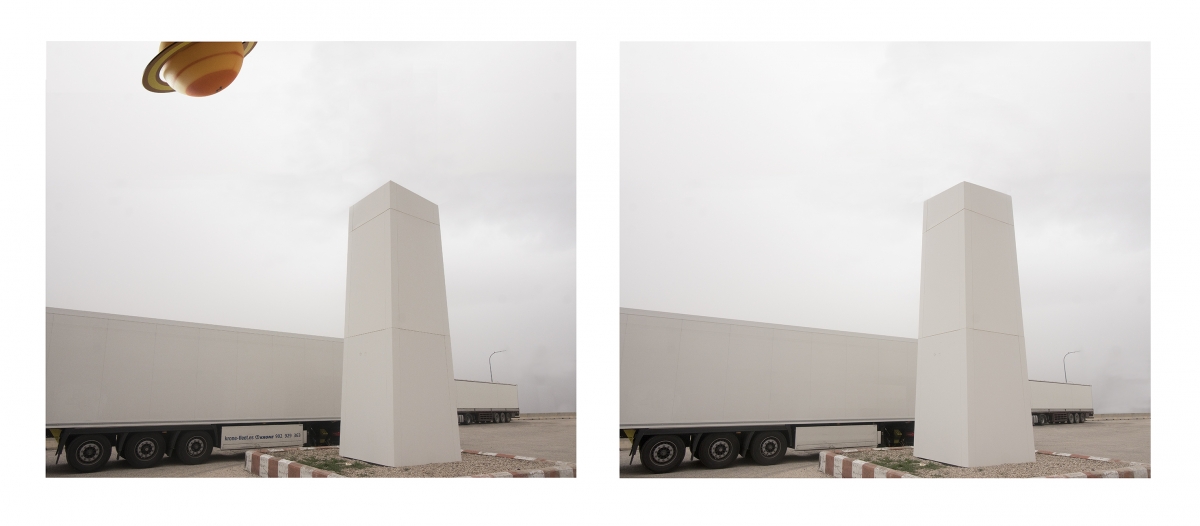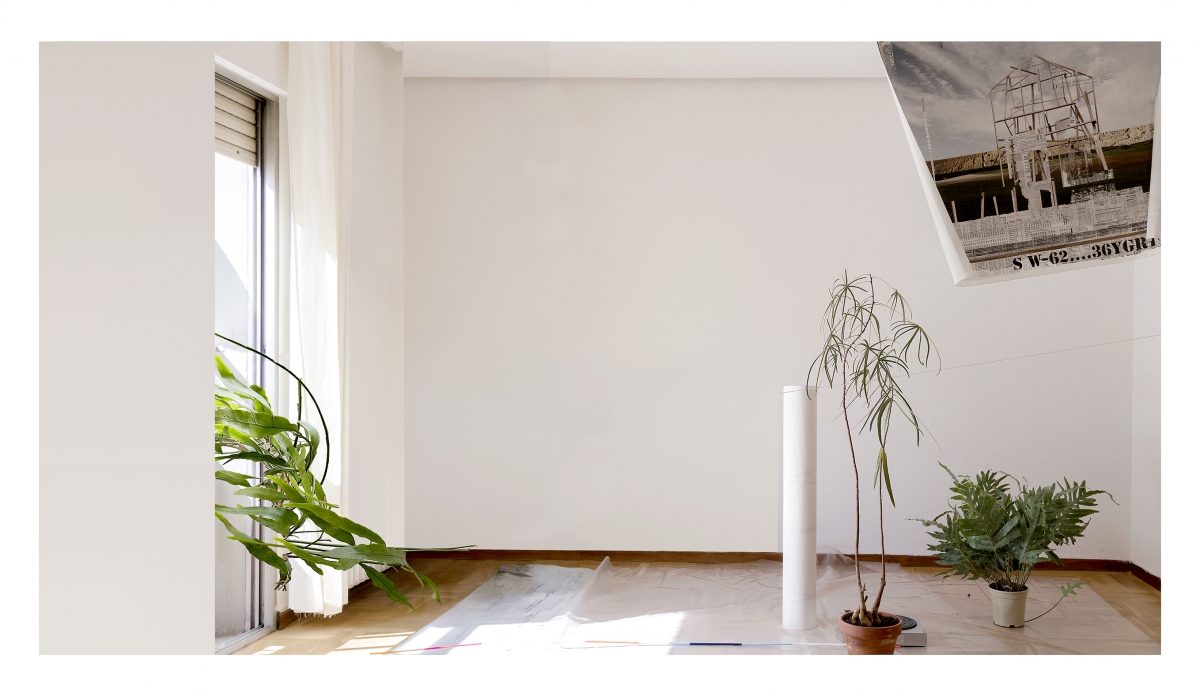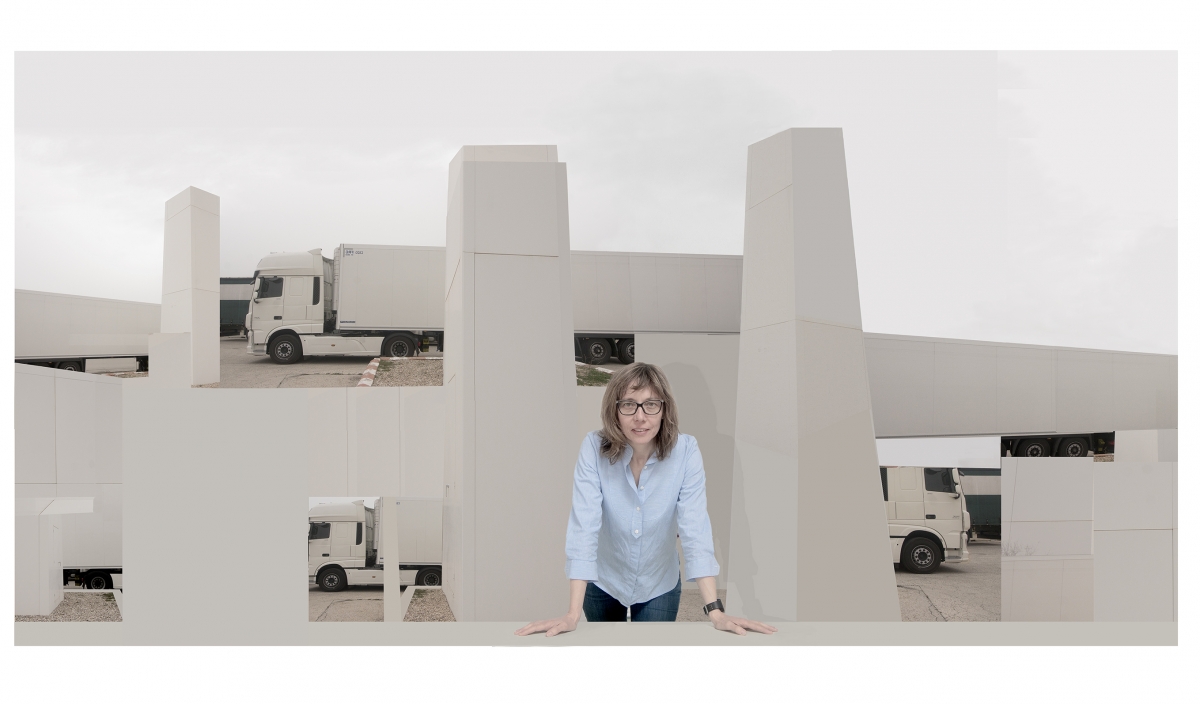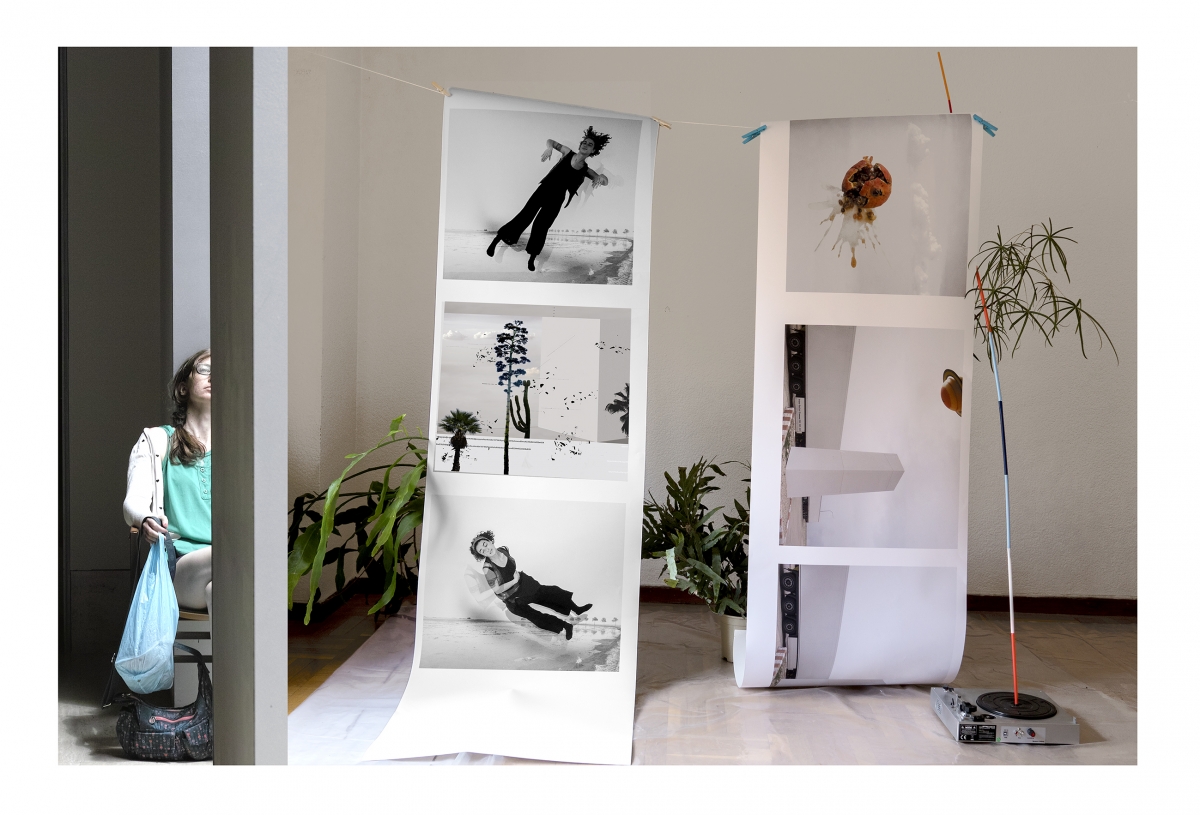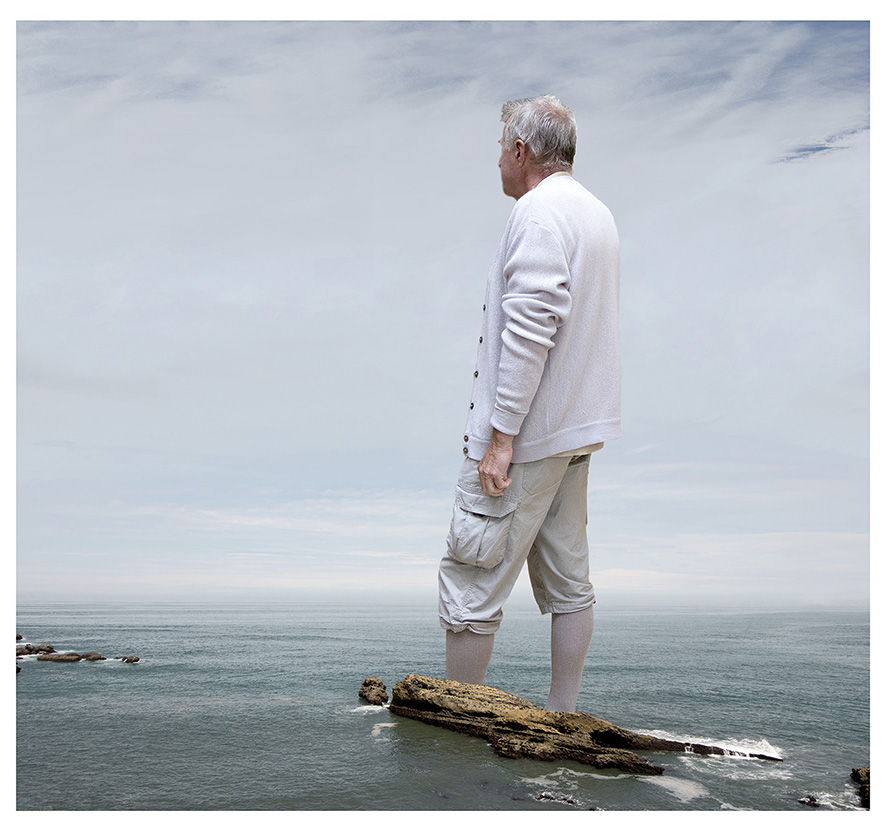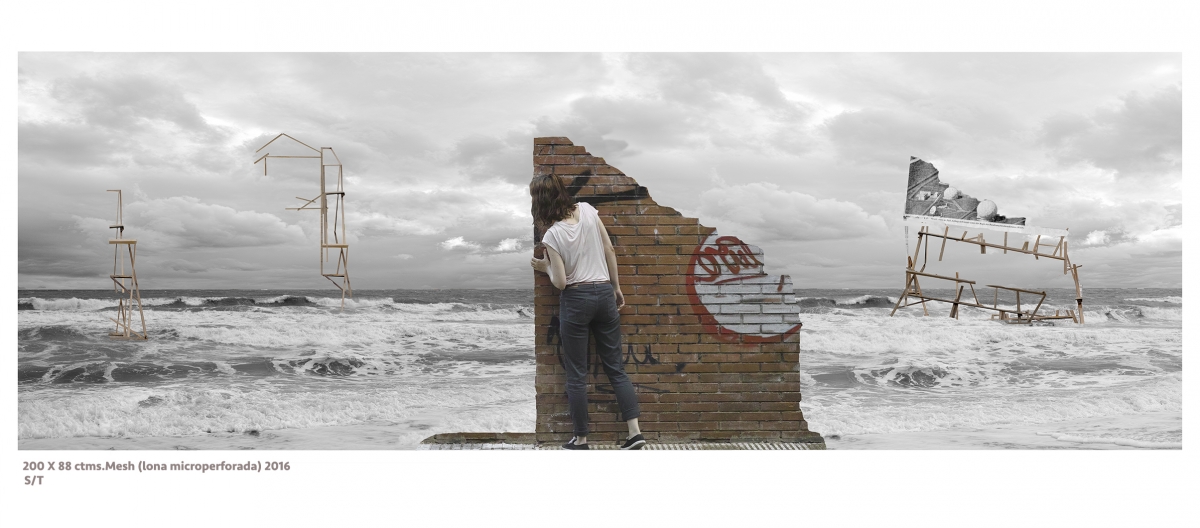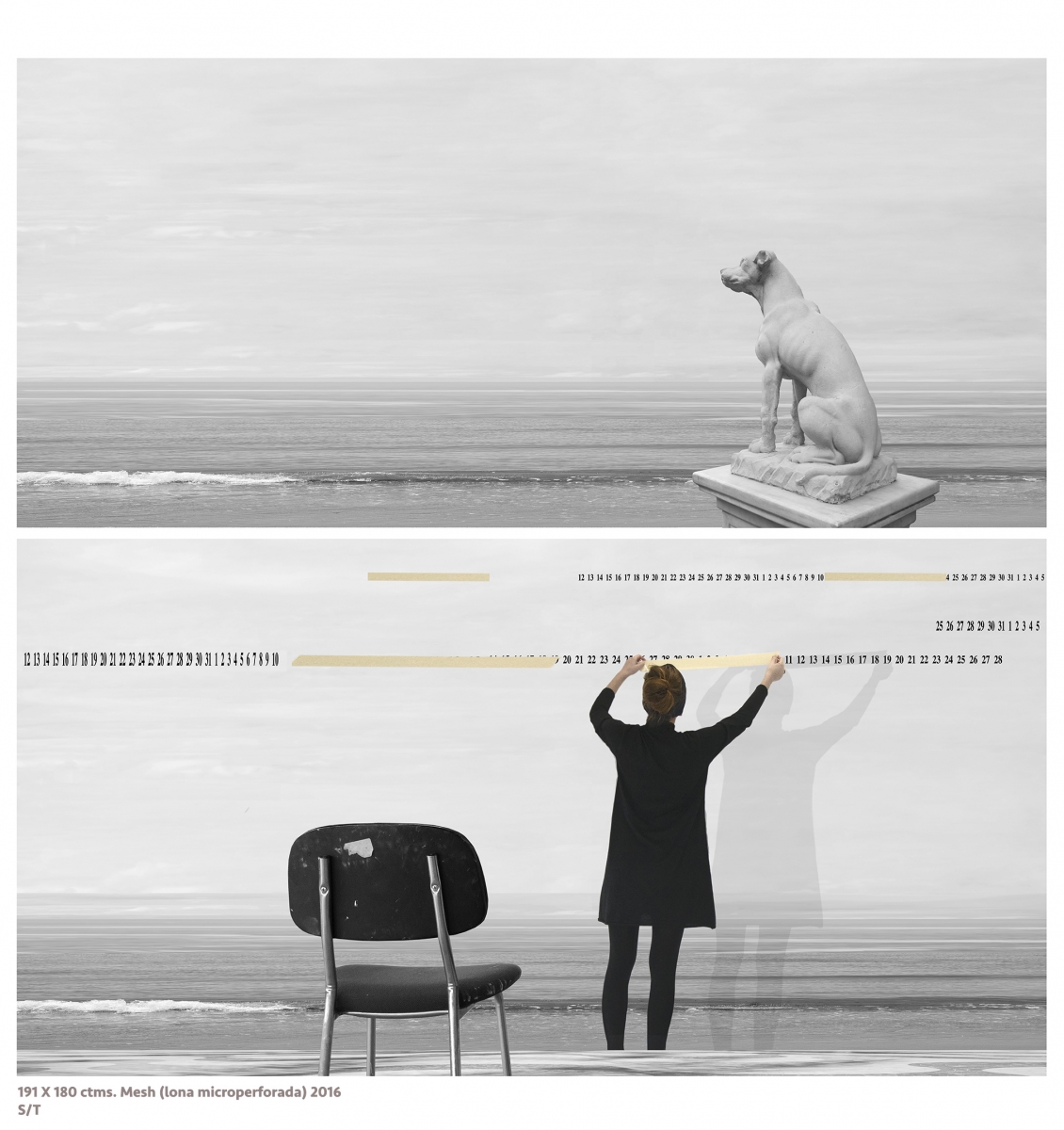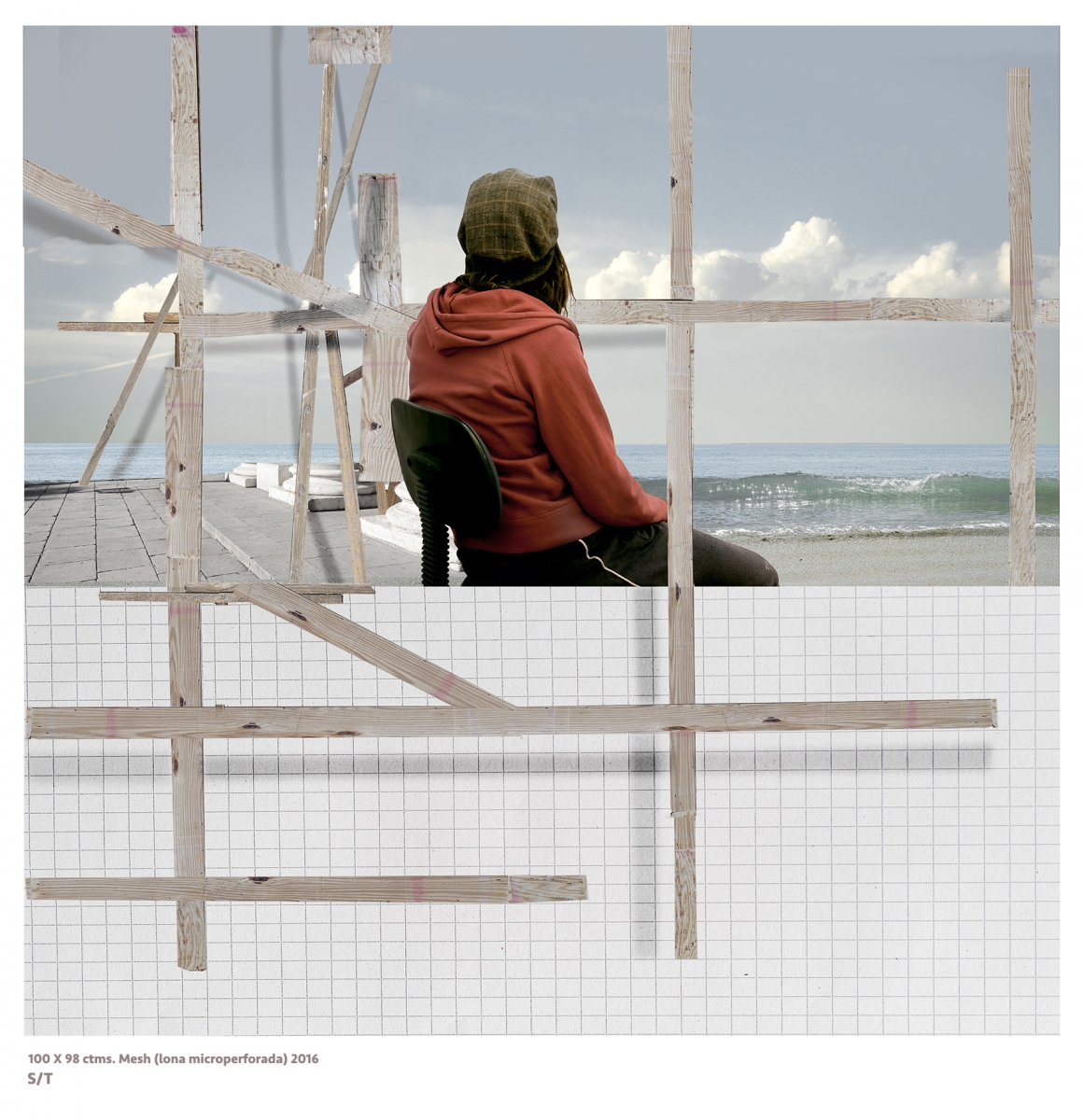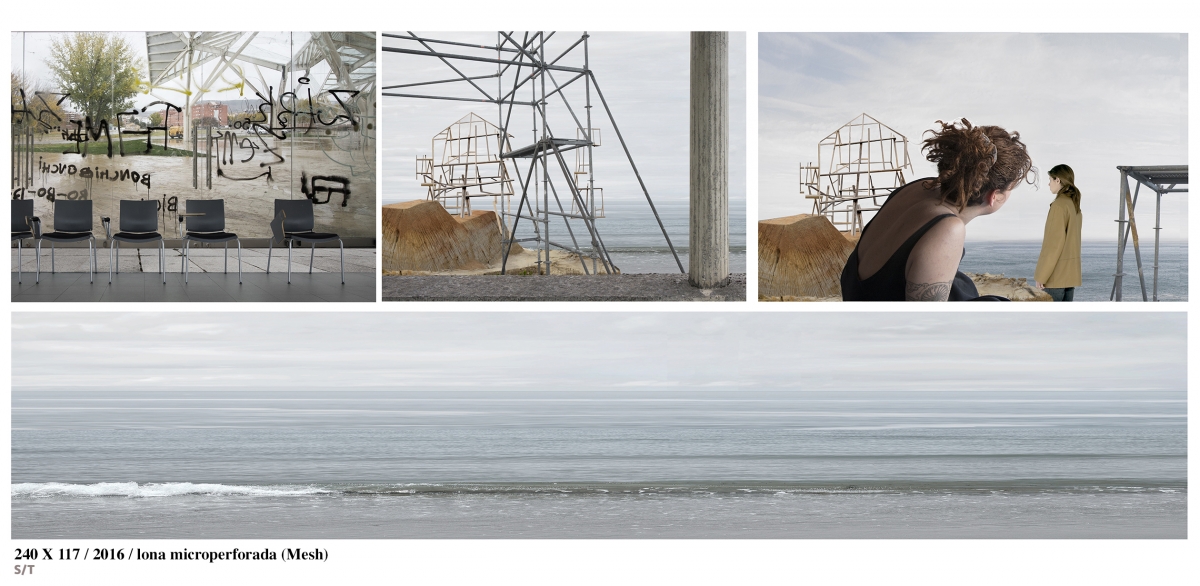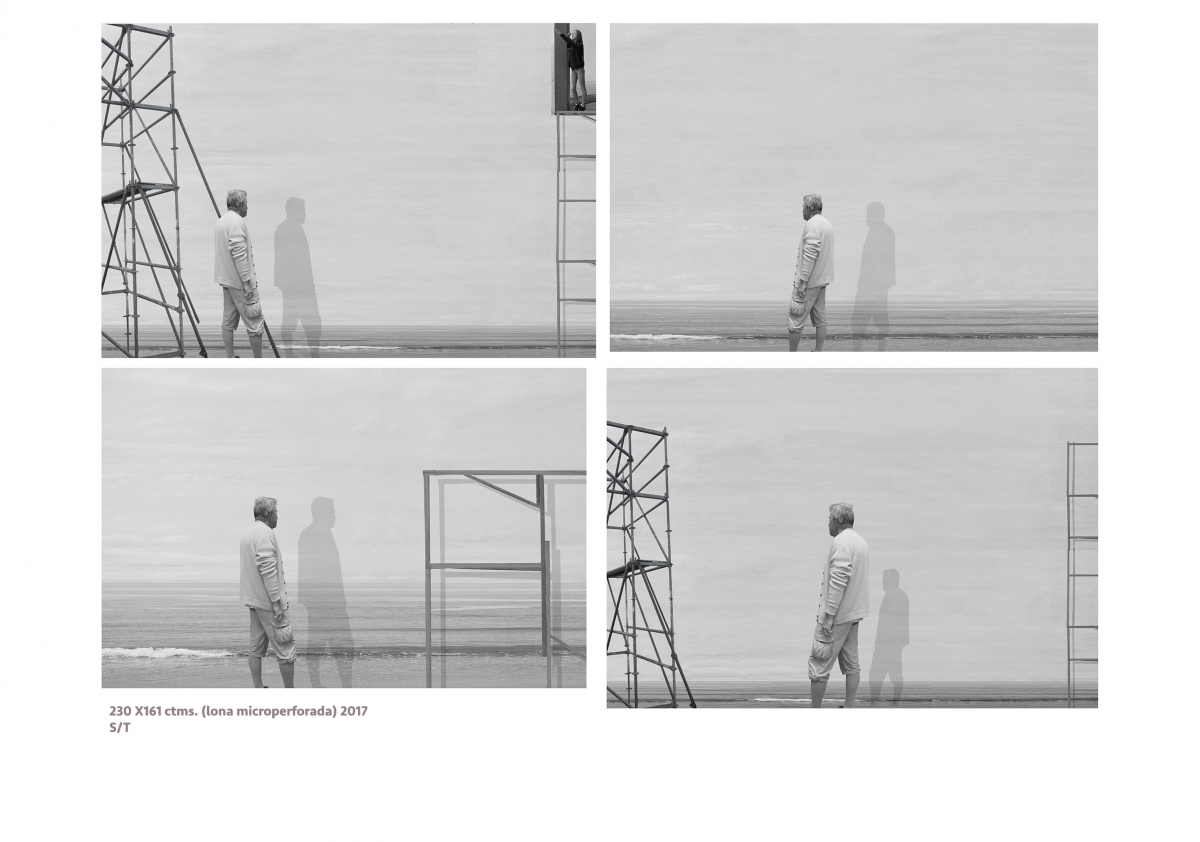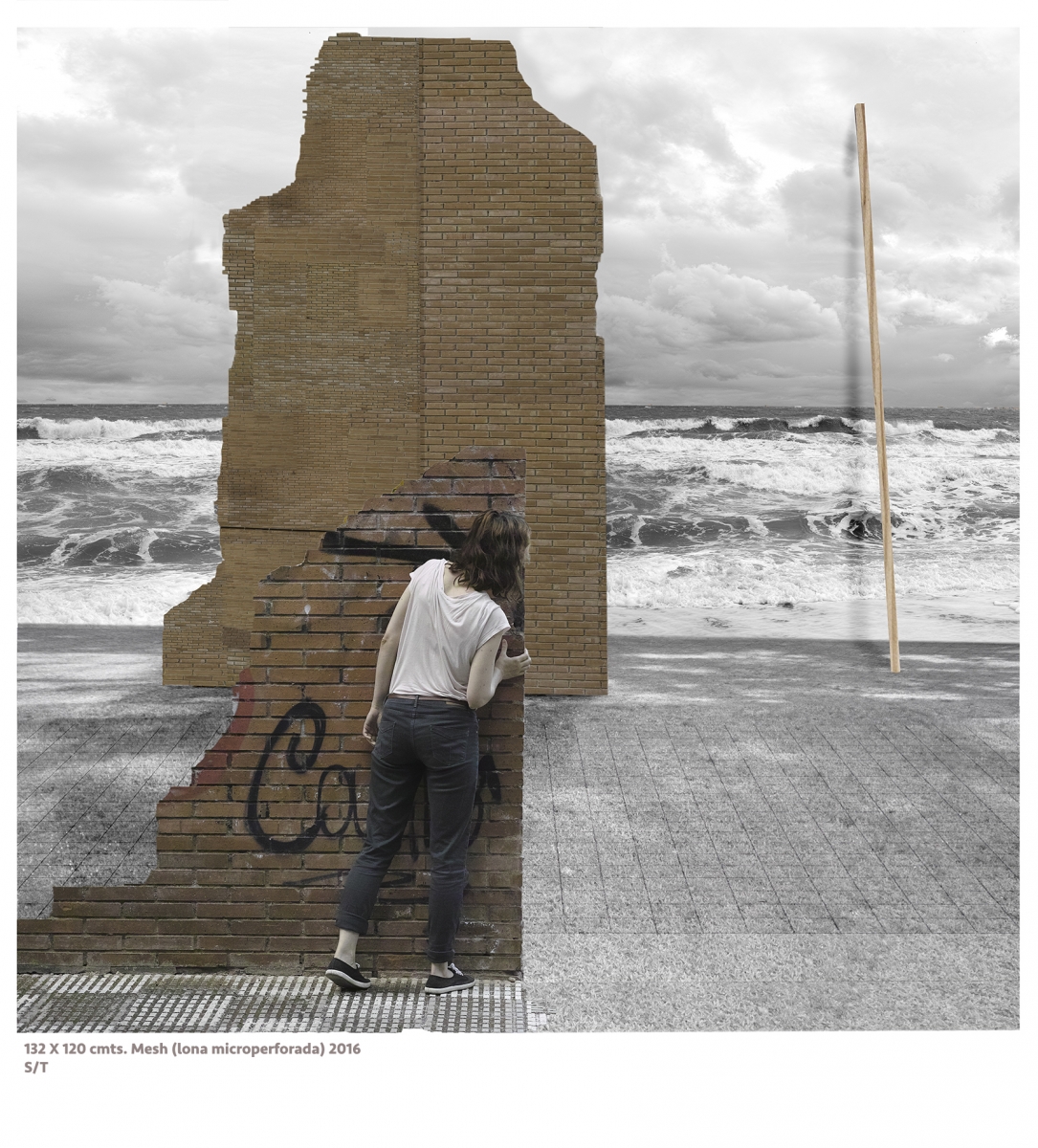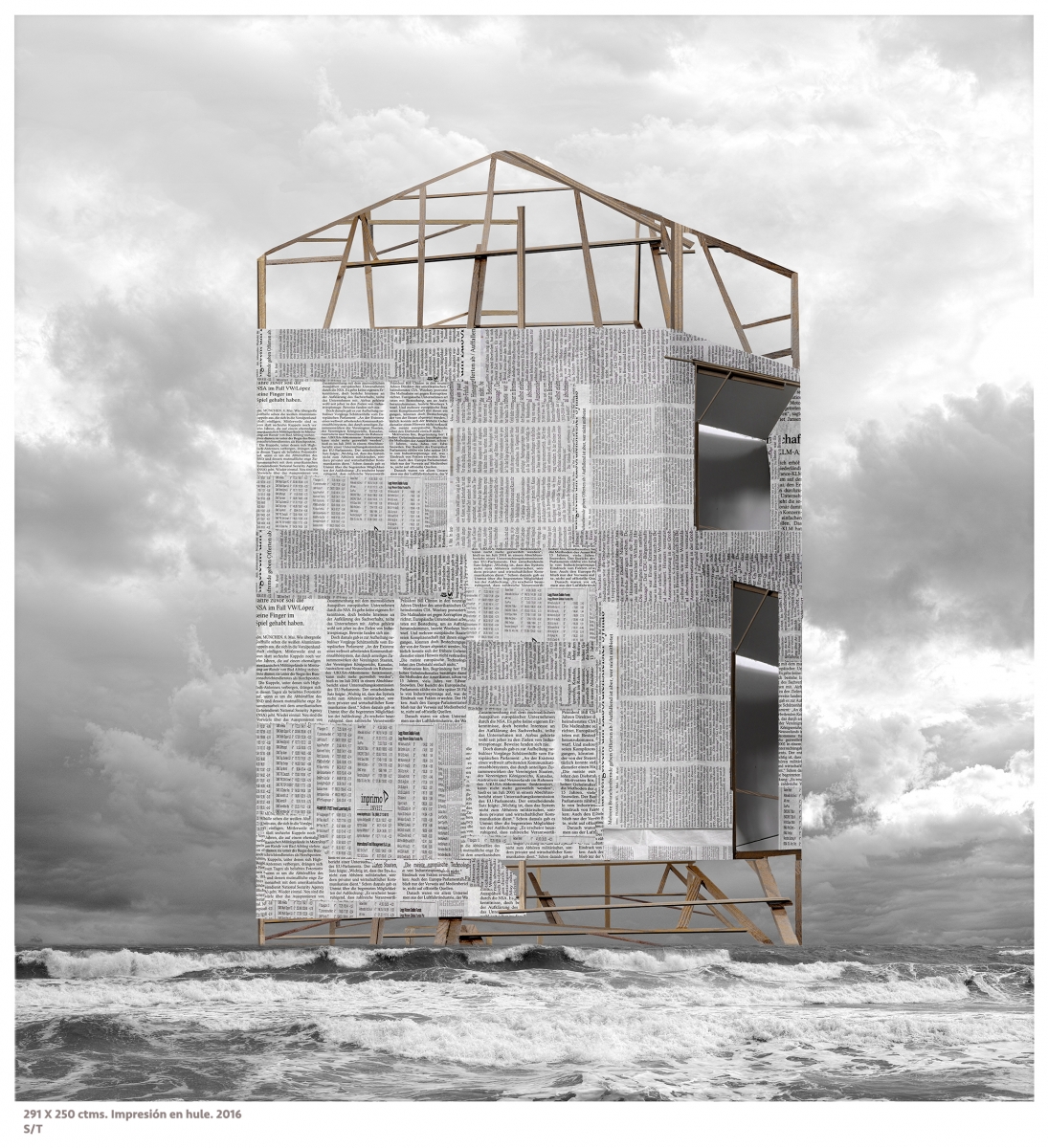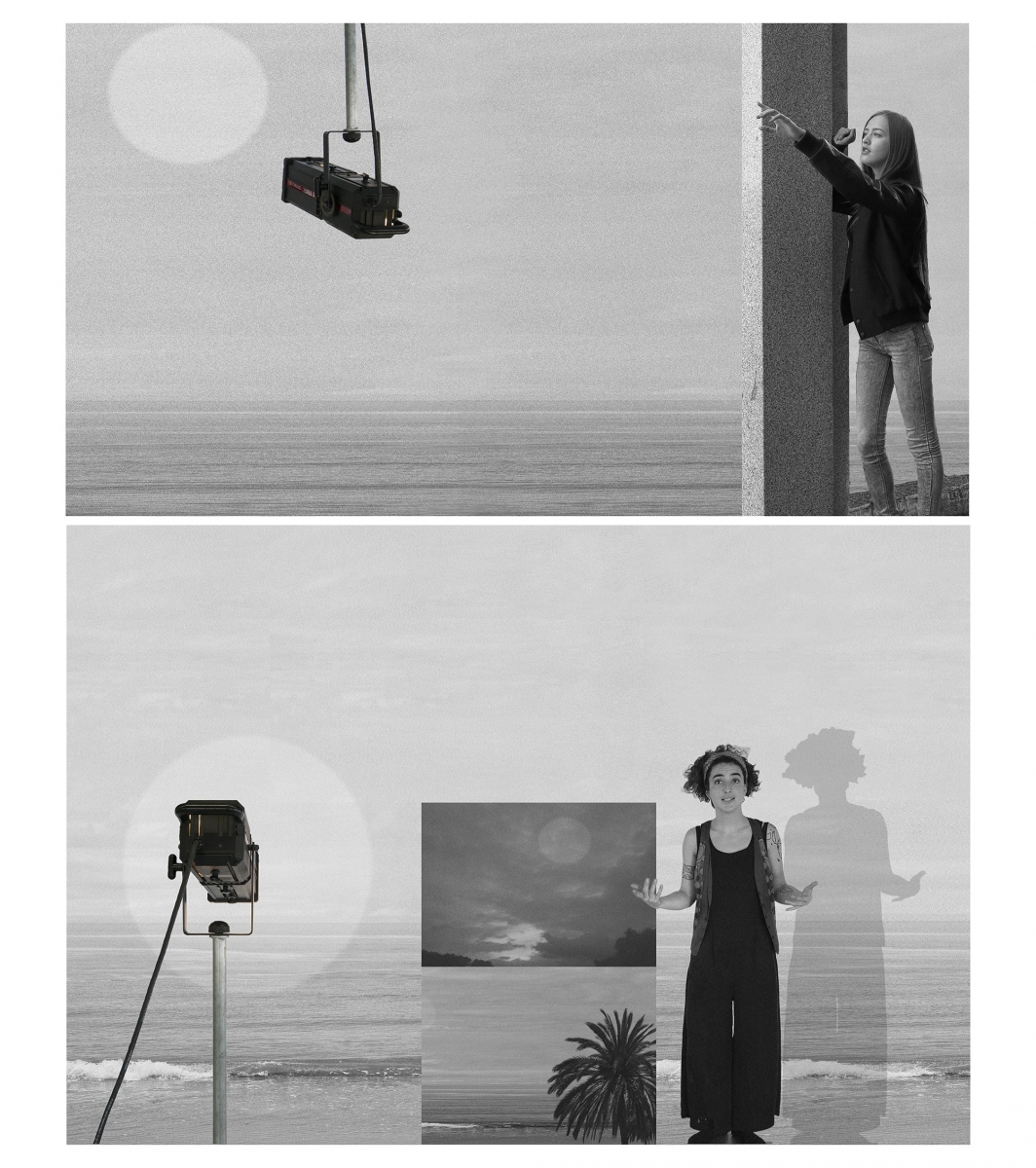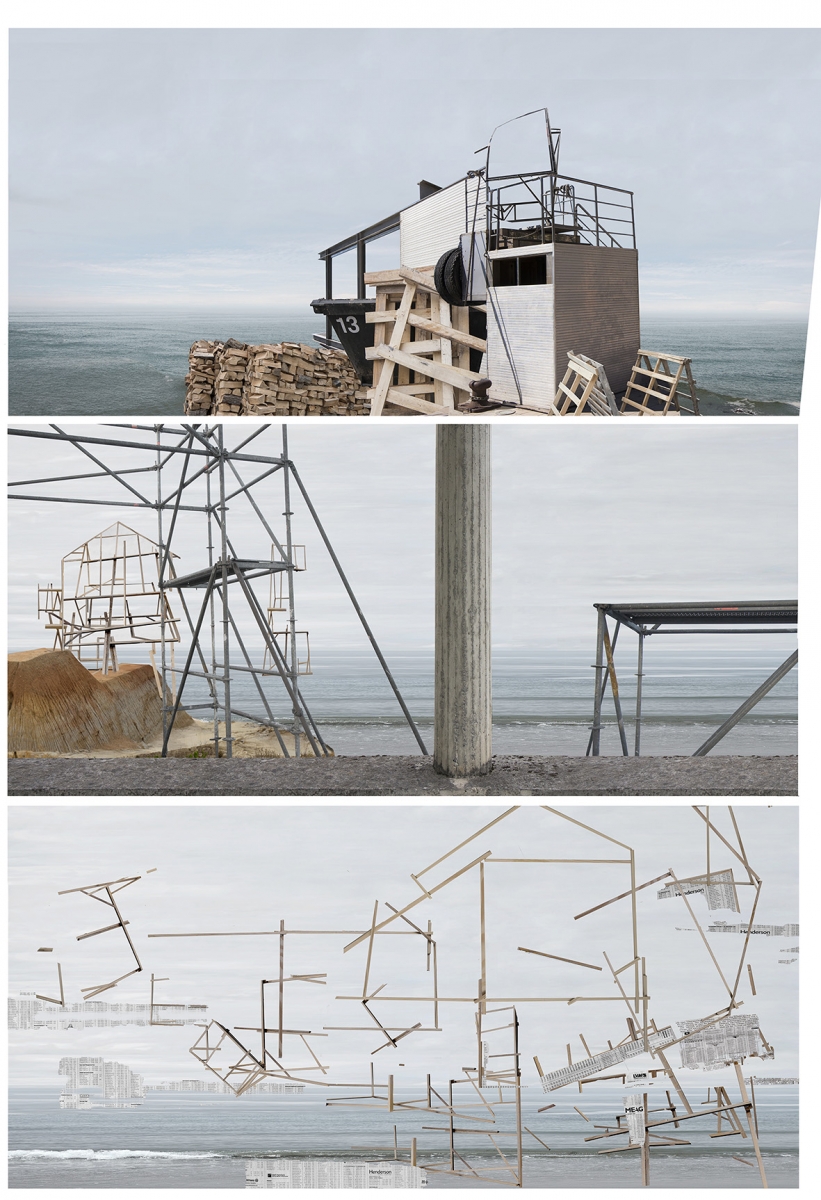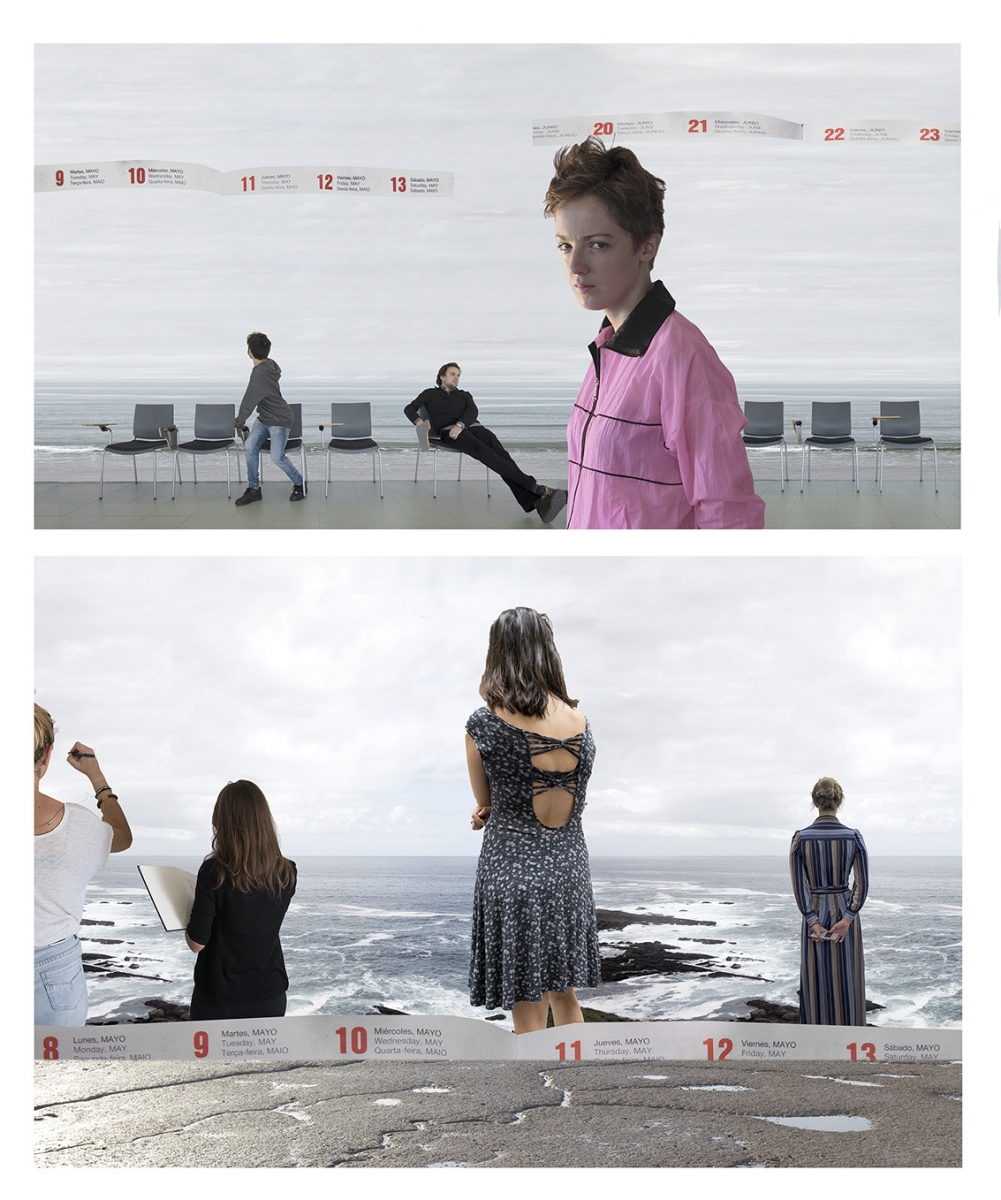*
Jesús Segura Cabañero, University of Murcia, Spain.
Introduction
In the 1980s the “spatial turn” began to crack the rancid presumption of absolute space, as a physical container that houses human activities. This new spatial paradigm concludes with a construction of space through their relationships. It is with the assumption of “social space”, understood as a political and ideological space, by Henri Lefebvre (2012) when authors like Milton Santos (1986), Edward Soja (1980, 1989, 1998), David Harvey (1989, 1996, 2012), Doreen Massey (1992, 1999, 2005), etc., definitively fracture Kantian absolute space and articulate the spatial shift from the relationships that are inscribed in it. However, it is what has been called the “performative turn” that places spatial questions in a topological sphere where, in addition to those already mentioned, other authors such as Nigel Thrift (1996, 1997, 1999, 2000, 2008), John-David Dewsbury (2003), Alam Latham (2003), Tim Cresswell (2002), Derek McCormack (2003, 2005), Jeff Popke (2003, 2009), Geraldine Pratt (2000), etc. have expanded the idea of space in terms of event and process.
This new topological conception of space is inseparable from the current artistic practices that constitute themselves as forms of cultural analysis. Mieke Bal has described them: “As works of art that are also fragments of cultural analysis, they manifest artistic practice as thought” (Bal, 2016: 119). Likewise, Garcia Canclini (2014) outlines art as a place of imminence that renews the ways of approaching sensitive experience, through practices that are situated in a space of intersection and translation. Many of these artistic practices are displayed through the collision of local and global temporalities, such as those that reflect on migration and the different processes of synchronization; it should be kept in mind the use of advanced technologies as control and containment devices. Authors like Daniel Birbaum (2005), Nicolas Bourriaud (2005), Kate Mondloch (2010), Mieke Bal (2011, 2016), Georges Didi-Huberman (2005, 2017), Christine Ross (2012) o Keith Moxey (2013) etc., have extensively studied this collision of temporalities.
The spaces exposed to the migratory flow of globalization, unfold this temporal diversity, and bring us to reflect around its performative identity in continuing struggle and definition of the territory. That is why we wish to emphasize, as a case study, the artistic frequencies developed by Ursula Biemann in her early work, through a series of video-essays. Either, with Performing the Border (1999), Writing Desire (2001), Remote Sensing (2003) Europlex (2003), Contained Mobility (2004) and Sahara Chronicle (2005-2009), these video-essays are presented, as Ursula Biemann has stated as “a non-linear and non-logical movement of thought that draws on many different sources of knowledge” (Bal & Hernández-Navarro, 2011: 224), where “it displays the traces of mediation and the processes of perception, in and through temporalities that allow heterogeneity” (Bal & Hernández-Navarro, 2011: 209). Similarly, Didi-Huberman (2005, 2017) defines this multitemporality as asynchronous and discontinuous, while proposing the heterogeneous assembly of images as a new rewriting of the phenomenon. This narrative strategy confronts directly what Karsten (2012) has called the chronological monochrony of globalization.
Ursula Biemann’s video-essays take as a central theme the place of women in the world capitalist economy. In her commitment to various forms of space policy, Biemann performs them with special attention to labor relations, migration and the impact of advanced technology; where she investigates this spatial delocalisation as a strategy of consumer capitalism to perpetuate its economic system, revealing a performative movement based on a deterritorialization and spatial reterritorialization. Then, we see that the frontier expands along with sexual oppression.
Our purpose in this paper is to reveal an intrinsic extant relationship between placement and temporality in the audiovisual. Without forgetting that the concept of installation in contemporary artistic productions is modulated as a way to recreate, intensify and inhabit the conflicts that the work itself expresses. As Biemann explains:
My preferred way of showing them is in the form of an installation, whereby some videos are projected and others can be viewed on monitors, creating a multi-perspective audiovisual environment that can be inhabited by viewers, in much the same way that migration space is inhabited by the actors depicted (2010: 4).
SPATIAL PERFORMATIVITIES
Because the fact is that particularly globalization and recent cross-border conflicts have profoundly changed our modes of production, communication, displacement and organization. The frontier exemplifies better than any other, that third space mentioned by Edward Soja (1996) or that space of “in between” inhabiting the temporal multiplicity, referred to by Homi Bhabha (1994). In order to face this new reality, the artist Ursula Biemann proposes the study of a transnational capitalism that enables the economic and political diaspora as a spatial element. The new geopolitical and social transformations have been stimulated by globalization and generate a transgression of the boundaries between the genres that go beyond the limits of the conventional disciplines. Doreen Massey (2005) underlines that gender, space and time are mutually constructed. She understands contemporary spatiality as a multiple framework of conflict relationships where the negotiating agency is permanently active. New spatial geographies are proposed as both a space of resistance and oppression. But also as an opportunity, a possibility of dynamiting the spatial construction generated by the effects of postcolonization and cultural domination, where the binomial geography-gender reveals the spatial segregation of women, which occurs, not only in terms of mobility, but also of identity. Demonstrating how industry actively uses spatial variations of gender through spatial divisions of labor, the global sense of place, and the geometries of power that translate deep social inequalities.
Especially significant are the temporalities inscribed in this process when exposed to a chronological imperialism that tries to homogenize and control the temporal experience. It is, therefore, that border temporalities maintain a constant duel with the chronological hegemony of capitalism and unfold a multi-temporality where the jams, retardations and paroxysms coexist with accelerations and simultaneities that configure their heterochronic character (Bal, 2011). Ursula Biemann embodies these liminal spaces and tries to unveil the oppressive relations that are generated between space-gender-power. But, it does so by engaging in an active process of spatial topophilia and inter-affectivity, created from the individual’s psychic activities: such as anxiety, fantasy and desire expressed in the “voices” that make up his video-essays. Doreen Massey proposes the elimination of all binary and totalizing logic that allows establishing a flexible space-time multiplicity. In this sense she has stated: “Space, as the product of a dynamic relational, is always a process. At all times it is defined and thus transforming (…)” (Ramírez, 2014: 68).

Fig. 1. Ursula Biemann, Performing the Border (1999). Source: http://www.geobodies.org/
Ursula Biemann studies these spaces in process and analyzes the role of gender and migration in the logic of global capitalism in the border areas. Biemann points out about his video-essays on the border: “My videos from the border are geographic projects in the sense that they are involved in a process of visualizing spatial relationships” (2010: 1). But in addition, the bulk of his work focuses on the politics of the body, on the policies of mobility and how they affect the regulation of movements of people, especially the sexualization of women registered geographically. Thus, her video essay Performing the Border (1999), (Figure 1) suggests Ciudad Juárez, as a paradigm of these frequencies. Located across the border from the Rio Grande in El Paso, Texas. Ciudad Juárez is the example of the “spatial fix” (Harvey, 2012), where the US multinationals set up their factories, called “maquilas”.
Biemann, analyzes the unstable identities that shape the gender conditions of this border city; Where he explores sexualization, division of labor, prostitution, the entertainment industry and sexual violence in the public sphere. In this regard Biemann comments:
One of the most striking, and perhaps most disturbing insights I gained on the border are that international labor in the South is not only feminized but also sexualized. The female workers are literally interpellated into their sexuality. Structurally speaking, a young woman in Juárez has three options: either she becomes an assembly worker, a domestica in a private house (if she is not sufficiently educated) or a prostitute (if she can’t produce a recommendation for such a position) (Sadowski-Smith, 2002: 108).
The video run through spontaneous interviews, we see the testimonies and reflections with human rights activists such as Judith or Cipriana, the testimony of theorist and artist Berta Jottar or employees of factories and sex workers such as Juana. Also, it reflects the diaspora of pregnant teenagers who seek to give birth in a US hospital and who are accompanied to cross the border by women called “coyote”, like Concha. These film documents are combined with interviews with journalists who investigate the relationship between technology and gender, such as Isabel. And, other materials that enrich the analysis; such as the reflections introduced by the voice-overs of Biemann herself, explanatory texts that overlap images, sounds that are recorded in situ and archival images from different sources. All this, is meticulously weaving new keys that facilitate the understanding of the new forms that is adopting the exploitation of gender inscribed in the productive processes of the globalized economy. The audiovisual material that forms Performing the Border (1999), is divided in four parts “The Plant”, “The Solution”, “Sex / Work”, and “the killings”. This film composition dissects the global structures that contribute to the economic and physical violence of women. Broadly, it poses how geography, technology and globalization intersect in the border area to promote a temporary culture of use and abuse where a temporary short circuit occurs that very cleverly, hegemonic chronologies try to tame under the guise of a recognition of this temporary otherness, inserted into the rhythms of production and consumption of transnational capitalism.
This liquid border space, paraphrasing Bauman (2000), introduces a geographic performativity propitiated by the “spatial fix” (Harvey, 2012), which involves the construction of a geography tailored to the needs of capital. Globalization, according to Harvey, would be another twist of capitalism in that “spatial arrangement” to perpetuate its geopolitical hegemony. The economic strategies involved in the border areas are due to the creation of territorial environments where the spatial and control arrangement is executed, as Biemann comments: “The technologies of border and labor control installed in Juárez make the relations between vision, vigilance, power, and bodies violently obvious” (Sadowski-Smith, 2002: 105). In this way, the centralized accumulation of transnational capital in the frontier zone generates a relational endogamy between service-use goods and the entertainment industries leading to the exploitation of labor and the appearance of an unstable, precarious and provisional identity framework. However Saskia Sassen (1999, 2000) relates to the emergence of globalization to the emergence of new territories, new identities and new political and social practices. These new territories contrast with the Fordist industrialization that was modulated from the national industrial centers. Likewise, Sassen (1999, 2000) points out the concentration of functions in the last capitalism and its strategy of generating a whole series of advanced services to the production that have replaced the industry as a dominating economic sector.
This implies liminal spaces that become performative geographies, where it is urgent, paraphrasing Bruno Latour (2008) to reassemble the social as an evolutionary process, as a living organism in constant development. Precisely the work of Ursula Biemann deals exponentially with that re-assembling throughout the articulation of the concept of space-time and its social, economic and cultural consequences in the policies of sexual identity. Thus, Biemann collects the migratory culture in his video-essays, through a heterochronical strategy (Bal, 2011): showing several times at the same time. And, as I have pointed out on other occasions and in relation to other artists, her works develop: “multisensory aspects (…) and fluid (…). Their combination, distribution and expansion form a kind of spatial environment, where (…) reinvent protocols of temporal representation that correspond to another visual regime of experience” (Segura, 2013: 7).
The video Writing Desire (2001) develops, like most of her work, different dialectical levels to explore the technologization of bodies and how they are directly related to the sexualization and global movement of women. Basically, the video-essay analyzes sexual consumerism on the web, with special attention to the relationships that are established between words, body and desire. It is also necessary to consider that these “corpographies” are inscribed in the cybernetic space and promoting the linkage between communication, sexual disembodying and sexual marketing on a global scale diluting their geographical references. This allows space-time debate to be placed within the logic of “space-time compression” (Harvey, 1989) that enables the heterogeneity of flows as a configuration element of new spaces. Castells (2003) considered it as “the space of flows” where there is a detachment of any meaning of place.
Writing Desire (2001) maps cyberspace as a model to examine the different subjectivities involved in the global movement of women’s bodies from the first world to the third world in the sex industry. These subjectivities move between romanticism and survival depending on to which world one shifts the gaze. And, they explore, electronic space and the processes of globalization as a mercantile tool in the service of what with very good fortune, José Luís Brea has called “consumer capitalism” (2008). This space-time construction is directly linked to the economic processes that are developed in sexual e-commerce. David Harvey (2012) focuses on the idea of the sagacity of capitalism in relation to space and time since it instrumentalizes it, redefining it permanently according to its needs and requirements. And, one of the strategies used is the acceleration of capital flows through new technologies. The annihilation of space by time, that is, the compression of space-time, eliminates the spatial barriers that hinder communicative action, to execute the capitalist program of homogenizing space and time in order to articulate dynamics of consumption. Biemann recovers, once again, the fragmentation resource in her video and manages to bring the unconscious desires of their characters to the surface of the image. In this way, it enables a heterochronic temporal construct that is latent in the documentary image and that the observer “decompresses” in all its temporal and affective richness.

Fig. 2. Ursula Biemann, Remote Sensing (2003). Source: http://www.geobodies.org/
Remote Sensing (2003), (fig. 2), traces topographies of global sex trade in relation to the satellite media. The video addresses the geographical mobility and migration of women linked to the illegal sex trade. Biemann activates the use of split screens along the video, showing simultaneously, moving landscapes, aerial views of satellite images and interviews with different interlocutors. Associating in the representation, different looks at the production of the global space of the sexual commerce. This hyper-visual strategy points to a global sense of place.
Doreen Massey (Albet & Benach, 2012) speaks of the overall sense of place, where the social and the spatial depend on each other. One cannot maintain the belief that space is a simple container where social facts are developed. Space and time are not neutral categories. Therefore, what apparently can appear offline, actually obeys a plural system of relationships that constitute it and conform as “geometries of power.” These geometries do not constitute a production of merely territorial space, but as a construction of space made by a system of relations with various actors located in multiple and changing geographies. Precisely, the representational strategy in Remote Sensing (2003) Ursula Biemann is to show that multiplicity of actors and expose the different “voices” that make this spatiotemporal global production system of the sex trade. In her video, she analyzes the production model of the remote image in order to examine a multiplicity of temporalities that occur with a retroactive character. That is, it explores a temporal consciousness through remote visual technologies and their systems of representation that always operate with a delay. That is, dilating and expanding the time of the event operating in the perceptual systems. As Jonathan Crary (1990) has pointed out, this reprocessing produces multiple temporalities, giving rise to a “process of dreaminess”. But perhaps is Mieke Bal who more accurately expressed it about Remote Sensing (2002): “Biemann’s work foregrounds the anti-narrative thrust of heterochrony (…) on the basis of her video we can also see that the migratory of contemporary culture (…) is itself infused with such an avant-garde ‘politics of time’”(Bal & Hernández-Navarro, 2008: 43).
Similarly, Europlex (2003), (fig. 3), in collaboration with the visual anthropologist Angela Sanders, tracks transboundary movements in the Spanish-Moroccan border. Moroccan women work in North Africa to produce goods for the European market and move to Europe along the border strip of the Strait of Gibraltar. These displacements of hundreds of women living on trade and cross-border traffic are collected in Europlex (2003), describing the daily journeys of three groups of Moroccan women: the smugglers, Moroccan domestic workers and those employed in textile factories. The film exposes the economic activity that takes place around the border area of Ceuta, Melilla and Tangier where smuggling is mixed with legality, and a submerged subsistence economy with the large transnational movements of goods of companies located in the area. The video reflects the process of production of space, through different paths or flows interconnected with each other, due to the social crossings and circulations.

Fig. 3. Ursula Biemann, Europlex (2003). Source: http://www.geobodies.org/
These antagonistic dynamics generate a mutable and changing space-time compression where the productivity, the retardation and the acceleration of the bodies is constantly being processed, due to the different time zone that converges in the Spanish-Moroccan border –see (Agacinski, 2003). As Biemann points out:
“When geography is understood as a spatialization of the dynamic social and economic relationships connecting local systems to the transnational, it becomes clear why border geographies are the site of extreme compression at all levels” (2010: 1).
Obviously, their arguments are reinforced by the mobility and dispersion of the economic logic inscribed in the female body of the smugglers, by loading the bales of merchandise. But also, emphasizes the insatiable greed of capitalism in its strategy of installing companies in areas where the economic and social conditions of women workers are degrading and significantly expand profit margins. Transferring that antagonism to the spatio-temporal debate to enable a certain “spatial justice” (Soja, 2014). Soja points to that chronotopic imperialism as the generator of processes of inequality and injustice that translate into exploitation and sexism. Biemann’s strategy in her video is based on visualizing antagonism as a contingent element. The video shows an accelerated and portentous soundtrack and a vertiginous mix of video images, digital graphics and text, creating in the viewer a space-time dislocation, which is crossed by frequencies that are connected to each other, as we visualize them. Biemann proposes the time frame of the border migrant as actions in process that break into the social space, and temporarily transform it. This mobile temporality proposes a temporal dilation, a heterochronic fracture that disagrees with the rhythms of production and consumption imposed by transnational capitalism. In her video-essay, this set of antagonisms recreates the heterochronic as agitation and accusation.
LIMINAL BODIES
We constantly see around us that mobility policies in global geopolitics are creating new meanings that need to be analyzed from the perspective of seeing mobility as a production system. The migratory fact is inextricably linked to the process of capitalist accumulation. The “geographic bodies” that travel as migratory flows operate under the postcolonial logic that represents an off-center subject, unstable and in permanent process. We agree, following Spivak (1988) and Mignolo (2012) that the process of subalternity, of agents “without voice”, in the migratory fact itself and the Eurocentric position, of immovable superiority of the West are perpetuated. In the face of this, emerges the critical border thinking in today’s geopolitical and body-politics. And it does so, bearing in mind that “immigrant consciousness” is ascribed to decolonial thinking. Then, we begin to realize how within the border coexist interconnected space-time palimpsests, which fracture the absolute, linear, and monochronic spaces and times of modernity, to enable a spatio-temporal multiplicity, where heterochrony is constituted as an analytical vector of the cartography of migration policies.
However, as Mieke Bal has pointed out, “Chronology is itself Eurocentric. (…), the imposition of European chronologies can be seen as one of the techniques of colonization (…) in the same way as the typically modern phenomena of census, map and museum also act as technologies for value and power” (2003: 16, 21).
In deed, the chronological imperialism is broken by the temporal discrepancies that the immigrants develop in their exodus, but also by the temporary dysphonia that occurs in the crossing of the migrant and that reveals how the colonial representations return to the present in the symbolic unconscious of the migrant. Heterochrony is constituted not only as a standardized and capitalized time atomizer, but also as a “habitable entity” to use a term suggested by Mieke Bal (2016: 131), where the body and its performativity converse with the colonial past.
Perhaps, an extreme example is Contained Mobility (2004) where Biemann explores the dynamic spatiotemporal suspension generated in mobility and containment policies. Here, the term “suspended time” is used, referring to the control of transboundary movements in the transit of goods and persons in these liminal spaces. The “antagonistic capitalism” mentioned by Brea (2010) portrays the struggle of dominant hegemonies over subalterns and underlines the exclusionary polarities where, as for example, the violation of the right of asylum is covered by policies of control and restrictive access that are due to factors of blockade, domination and exploitation of the migrant. In her video, Biemann examines the cultural plurality of the migratory flow and how access control systems are actually based on systems of economic, cultural, and social stratification by the West. So in this way they provide capitalism, in a move of “accumulation by dispossession” (Harvey, 2003), of the symbolic and hegemonic territory for the creation of a Westernized identity. And although David Harvey refers to the modus operandi of a new imperialism and the current crisis as its best mentor, we must not forget that cognitive capitalism operates, above all, in the dispossession of identities.
In contrast, the “performative” fact is constituted as a new form of spatial knowledge: “emphasizing the fact that performance is, in itself, a form of knowledge, an intelligence in action” (Thrift and Dewsbury, 2000: 425). The non-representational theory formulated by Thrift (2008) considers space as a means of thinking in action. And, the material body is inscribed in that process interacting and co-evolved with space. The same Thrift (1996) relies on the reflections of Merleau-Ponty (2002) to articulate, through the kinesthetic action of the body, a constant reworking of space. Thus, portable practices, to use a term from Bourriaud (2009), are not only an act of resistance and a challenge to the cross-border control systems, but also a decolonizing strategy.
Ursula Biemann presents her video essay on a “traveling body” in its condition of “not belonging” and “non-legal existence”. In this way, it enables the antagonism of the transnational mobility of freight containers from the Siberian Gulag to Liverpool, showing the globalized transport network that regulates the movement of the container and the confinement of Anatol Kuis Zimmermann within it. On the one hand, it immerses in the systems of control of the movement of goods and people and, on the other, it exposes the tactics to circumvent the restrictions of mobility. The double-screen video combines fictitious, simulated, real-life documents about Anatol’s migrant trajectory. And it reflects the constant conflict between the regulation and supervision of Anatol’s mobility confronted with his obstinate struggle for survival, self-determination of his movements and political asylum. The heterochronic temporality of the migrant roams in that suspended time that Biemann reflects in the video. But it is also the temporary antagonism of movement-paralysis, productivity-unproductivity that dwells in the migrant heterochrony. On the one hand, the uprooting, confinement, lawlessness and paralyzing Anatol and, secondly, migratory flows in networks of transnational transport in which he is immersed and that enable a repressed diaspora, a “deranged time” (Bal, 2016) pointing his destination.
Finally I want to refer to Sahara Chronicle (2005-2009), where Ursula Biemann researches the sub-Saharan exodus towards Europe, taking as an object of analysis the different modalities, routes and networks together with the logistics system of these crossings in the geographical area made up of the Moroccan Sahara, Mauritania and Niger. The project examines the mobility policy, visibility and restraint that are in the sub-Saharan area and forming one of the hot spots of the current global geopolitics. Sahara Chronicle (2005-2009) consists of twelve short videos, whose discourse and documentary structure has a unique feature that reveals what T. J. Demos (2013) has called “the specters” of colonialism:
(…) a term I use to address the haunting memories and ghostly presences that refuse to rest in peace and cannot be situated firmly within the representation. Indeed they typically escape the grasp of the art history of iconographical identification as much as the positivist typologies of scientific knowledge (2013: 8).
That coexistence of “the spectral” in the images of Biemann is backed by the idea of counter-geographies made by Saskia Sassen (1999, 2000), to demonstrate the strong ties created by the colonial empires that still exist today. These colonial ties between hegemonic and peripheral countries has made cross-border migrations circuits to generate a feminization dragging the “colonial present” mentioned by T. J. Demos.
Looking at the videos of Ursula Biemann, we will have to agree, as Keith Moxey (2013) has pointed out, that images and objects do not belong to an autonomous temporal structure but are elements of time by themselves and therefore they possess and engender time. They are time machines.
References
Agacinski, S. (2003). Time passing: Modernity and nostalgia. New York: Columbia University Press.
Albet, A., & Benach, N. (2012). Doreen Massey, un sentido global del lugar, Barcelona: Icaria Editorial.
Bal, M. (2003). “Visual essentialism and the object of visual culture”. Journal of visual Culture, 2(1), 5-32.
Bal, M. (2016). Tiempos trastornados. Análisis, historias y políticas de la mirada. Madrid: Akal.
Bal, M., & Hernández-Navarro, M. Á. (Eds.). (2011). Art and visibility in migratory culture: conflict, resistance, and agency. Amsterdam: Rodopi.
Bal, M., & Hernández, M. Á (2008). 2move: video art migration. Murcia: Cendeac.
Bauman, Z. (2000). Liquid modernity. Cambridge, UK: Polity Press.
Bhabha, H. K. (1994). The location of culture. London: Routledge.
Biemann, U. (2010). “Counter-Geographies in the Sahara”. Art & Research. A Journal of Ideas, Contexts and Methods, Volume 3 (No. 1), pp. 1-11.
Birnbaum, D. (2005). Chronology. New York: Lukas & Sternberg.
Bourriaud, N. (2005). Postproduction: Culture as screenplay: how art reprograms the world. New York: Lukas & Sternberg.
Bourriaud, N. (2009). The radicant. New York: Lukas & Sternberg.
Brea, J. L. (2008). El tercer umbral: estatutos de las prácticas artísticas en la era del capitalismo cultural (No. 3). Cendeac.
Brea, J. L. (2010). “Retóricas de la resistencia: una introducción”. Estudios Visuales, 7, pp. 8-13.
García, Canclini, N. (2014). Art beyond itself: Anthropology for a society without a story line. Durham: Duke University Press.
Castells, M. (2003). The Internet galaxy: Reflections on the Internet, business, and society. Oxford: Oxford University Press.
Crary, J. (1990). Techniques of the observer: On vision and modernity in the nineteenth century. Cambridge, Mass: MIT Press.
Creswell, T. (2002). “Introduction: theorizing place”. En: Verstraet, G. y Cresswell, T. (eds.). Mobilizing Place, Placing Mobility. Amsterdam: Rodopi, 11-32.
Demos, T. J. (2013). Return to the Postcolony: Specters of Colonialism in Contemporary Art: Sternberg Press.
Dewsbury, J. D. (2000). “Performativity and the event: enacting a philosophy of difference”. Environment and planning D: society and space, 18(4), 473-496.
Dewsbury, J. D. (2003). “Witnessing space: knowledge without contemplation”. Environment and Planning A, 35 (11), 1907-1932.
Didi-Huberman, G. (2005). Confronting images: Questioning the ends of a certain history of art. University Park, Pa: Pennsylvania State University Press.
Didi-Huberman, G. (2017). The surviving image: Phantoms of time and time of phantoms: Aby Warburg’s history of art. Transl. H. Mendelsohn. Pennsylvania: Penn State University Press.
Fraser, N. (1990). “Rethinking the public sphere: A contribution to the critique of actually existing democracy”. Social text, (25/26), 56-80.
Harvey, D. (1990). “Between Space and Time: Reflections on the Geographical Imagination”. Annals of the Association of American Geographers, 80(3), 418-434.
Harvey, D., & Braun, B. (1996). Justice, nature and the geography of difference. Oxford: Blackwell.
Harvey, D. (1989). The condition of postmodernity. Cambridge, Mass: Blackwell.
Harvey, D. (2003). “The right to the city”. International journal of urban and regional research, 27(4), 939-941.
Harvey, D. (2012). Rebel cities: From the right to the city to the urban revolution. New York: Verso.
Karsten, L. (2012). Globalization and time. Londres: Routledge.
Latham, A. (2003). “Research, performance, and doing human geography: Reflections on the diary photograph”, Environment and Planning A, 35, 1993-2017.
Latour, B. (2008). Reensamblar lo social: Una introducción a la teoría del actor-red. Buenos Aires: Manantial.
Lefebvre, H. (2012). The production of space. Malden, Mass: Blackwell Publishing.
Massey, D. (1992). “Politics and space/time”. New Left Review, (196), 65.
Massey, D. (1999). “Space‐time,‘science’and the relationship between physical geography and human geography”. Transactions of the Institute of British Geographers, 24(3), 261-276.
Massey, D. (2005). For Space. London: Sage Publications.
McCormack, D. P. (2003). An event of geographical ethics in spaces of affect. Transactions of the Institute of British Geographers, 28(4), 488-507.
McCormack, D. P. (2005). “Diagramming power in practice and performance”. Environment and Planning D: Society and Space, 23 (1), 119-147.
Merleau-Ponty, M. (2002). Phenomenology of perception. London: Routledge
Mignolo, W. (2012). Local histories/global designs: Coloniality, subaltern knowledges, and border thinking. Princeton, NJ: Princeton University Press.
Mondloch, K. (2010). Screens: Viewing media installation art. Minneapolis: University of Minnesota Press.
Moxey, K. P. F. (2013). Visual time: The image in history. Durham: Duke University Press.
Popke, E. J. (2003). “Poststructuralist ethics: subjectivity, responsibility and the space of community”. Progress in Human Geography, 27(3), 298-316.
Pratt, G. (2000). “Research performances”. Environment and Planning D: Society and Space, 18(5), 639-650.
Ramírez, A. V. (2014). “La producción política del espacio: el problema de la praxis”. Utopía y Praxis Latinoamericana, 18(63), pp. 62-74.
Ross, C. (2012). The past is the present; it’s the future too: The temporal turn in contemporary art. New York: Continuum.
Sadowski-Smith, C. (2002). Globalization on the line: culture, capital, and citizenship at U.S. borders. New York: Palgrave.
Santos, M. (1986). Espacio y método. Barcelona: Cátedra de Geografía Humana, Facultad de Geografía e Historia, Universidad de Barcelona.
Sassen, S. (1999). Globalization and its discontents: Essays on the new mobility of people and money. New York: New Press.
Sassen, S. (2000). “Women’s burden: counter-geographies of globalization and the feminization of survival”. Journal of international affairs, 503-524.
Segura, J. (2013). “Tiempo, narrativa y espectador en la obra de Doug Aitken”. ASRI: Arte y sociedad. Revista de investigación, Núm. 4.
Soja, E. W. (1980). “The socio-spatial dialectic”. Annals of the Association of American Geographers, 70(2), 207-225.
Soja, E.W. (1989). Post Modern Geographies: The Reassertion of Space in Critical Social Theory: Verso.
Soja, E. W. (1998). “Thirdspace: Journeys to Los Angeles and other real-and-imagined places”. Capital & Class, 22(1), 137-139.
Spivak, G. C. (1988). “Can the subaltern speak?”. In Marxism and the Interpretation of Culture (pp. 271-313). Macmillan Education UK.
Thrift, N. (1999). “Steps to an ecology of place”. En: Massey, D.; Allen, J. y Sarre, P. (eds.). Human geography today. Cambridge: Polity Press, 295-322.
Thrift, N. (1996). Spatial formations. Londres: Sage.
Thrift, N. (1997). “The still point: resistance, expressive embodiment and dance”. En: Pile, S. y Keith, M. (eds.). Geographies of resistance. Londres: Routledge, 124-51.
Thrift, N. (2008). Non-representational theory: Space, politics, affect. Routledge.
Thrift, N., & Dewsbury, J. D. (2000). “Dead geographies —and how to make them live”. Environment and planning D: society and space, 18(4), 411-432.
*This paper is a revision of the chapter “Espacialidades desbordadas y temporalidades heterocrónicas en Ursula Biemann”. In Experiencias y manifestaciones Culturales de vanguardia, 2016, McGraw‐Hill Education.


